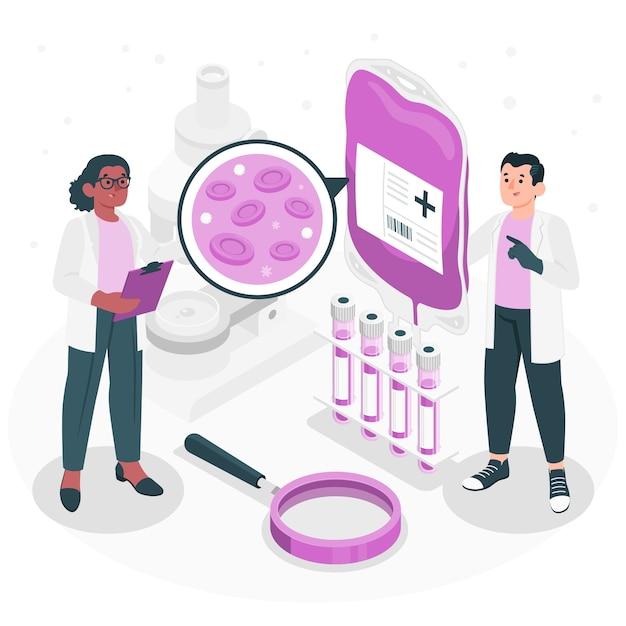In the realm of scientific research, experimentation often reigns supreme. However, there are alternative methods that can offer valuable insights without the need for complex manipulations. Welcome to this blog post, where we dive deep into the fascinating world of non-experimental research!
From quantitative analyses to observations, non-experimental research serves as a robust avenue for exploring relationships and drawing meaningful conclusions. By observing and studying naturally occurring phenomena, researchers can unravel intricate patterns and uncover hidden truths. But why opt for non-experimental research over its experimental counterpart? And what are some noteworthy examples that have shaped our understanding of the world?
In this blog post, we will explore the advantages and disadvantages of non-experimental research, grasp the essence of experimental research methods, and delve into some captivating examples of non-experimental research studies. So, grab a cup of coffee and prepare to embark on a journey of discovery!
What are Some Examples of Non-Experimental Research
Non-experimental research plays a crucial role in the field of scientific inquiry. It allows researchers to study phenomena in their natural settings without manipulating variables. So, let’s dive into some intriguing examples of non-experimental research that showcase the fascinating diversity of this approach.
1. Observational Studies: Unveiling the Secrets
Observational studies involve the systematic observation and documentation of natural behaviors and occurrences. Picture a team of enthusiastic researchers discretely observing the behavior of wild dolphins off the coast of California. By keenly observing their interactions, communication patterns, and feeding habits, researchers can gain valuable insight into these incredible marine creatures. These observations form the foundation for developing theories about their behavior.
2. Descriptive Surveys: Peeking into the Minds
Descriptive surveys offer an excellent way to gain insights into people’s thoughts, opinions, and behaviors. For example, imagine a survey sent to individuals across the United States, inquiring about their trust in autonomous vehicles. By collecting responses from a diverse group of people, researchers can analyze the data to explore factors influencing public perception and identify areas for improvement in autonomous vehicle technology.
3. Case Studies: Up Close and Personal
Case studies provide an in-depth exploration of a specific individual, group, or situation. Think of a psychologist delving into the case of a patient suffering from a rare psychological disorder. By conducting detailed interviews and analyzing medical records, the psychologist can gain a comprehensive understanding of the disorder’s symptoms, progression, and potential treatment options. Case studies provide invaluable insights into unique and complex scenarios.
4. Archival Research: Unearthing the Past
Archival research involves analyzing existing records, documents, and artifacts to gain insight into historical events, cultural shifts, or societal changes. Imagine a historian digging through the dusty archives of a small town to uncover the untold stories of the local community during times of war. By meticulously examining letters, newspapers, and photographs, the historian can piece together a vivid and accurate representation of the town’s past.
5. Qualitative Interviews: Delving into Experiences
Qualitative interviews involve in-depth conversations with individuals to gain a deeper understanding of their experiences, perspectives, and emotions. Consider a sociologist conducting interviews with volunteers who have traveled to disaster-stricken countries to provide relief aid. By delving into their experiences, the sociologist can explore the motivations, challenges, and personal growth that occur during these humanitarian missions.
6. Correlational Studies: Uncovering Relationships
Correlational studies aim to identify relationships between variables without manipulating them. For instance, imagine a group of researchers investigating the relationship between sleep duration and academic performance among college students. By gathering data on students’ sleep habits and their GPA scores, the researchers can statistically analyze the data to determine whether there is a correlation between the two variables.
Non-experimental research offers a wealth of possibilities to explore and understand various phenomena in our world. From observing animal behavior to unearthing historical records and exploring human experiences, these examples showcase the wide range of avenues available to researchers. So, embrace the wonders of non-experimental research and let curiosity guide you on your own scientific journey!
FAQ: What are some examples of non-experimental research
Welcome to the FAQ section for non-experimental research! We’ve got some fantastic questions lined up for you today, so grab a cup of coffee and let’s dive right in.
What are the advantages of using non-experimental quantitative research
In non-experimental quantitative research, you get to skip the whole “let’s manipulate variables and control everything” charade. It’s like conducting research in your pajamas! Here are a few advantages:
1. Natural Environment: Non-experimental research allows you to observe and gather data in real-life situations. No lab coats or white mice required.
2. Saves Time and Money: Why spend precious resources on setting up complex experiments when you can collect data using surveys, questionnaires, or observations? Non-experimental research is the thrifty researcher’s dream!
3. Ethical Issues? Bye-bye: In some cases, conducting experiments can raise ethical concerns. Non-experimental research eliminates those worries since you’re not manipulating variables or putting anyone at risk. Ethical superhero, at your service!
What are the disadvantages of experimental research
Ah, experimental research, the daredevil of the research world. While it has its perks, it also comes with a few downsides that might make you want to think twice:
1. Complex Setup: Buckle up for a rollercoaster ride of setting up variables, creating control groups, and randomizing participants. It’s like planning a detailed heist, minus the excitement (unless you’re really into that stuff).
2. Limited Real-life Application: Experimental research often takes place in controlled environments, which means its findings may not accurately reflect what happens in the real world. Sorry, Mr. Lab, but life is messy!
3. Ethical Dilemmas: Playing with variables and manipulating conditions can sometimes raise ethical concerns. You could end up walking on eggshells trying not to offend the research ethics committee. Talk about a tightrope act!
What is non-experimental research in quantitative research
Non-experimental research is the chilled-out cousin of its experimental counterpart. In this approach, researchers don’t manipulate variables or control the environment. Instead, they simply observe, measure, and analyze existing data to draw conclusions.
When performing non-experimental research, you become the Sherlock Holmes of the data world. You gather information, sift through it, and connect the dots. No test tubes or explosions required. Elementary, my dear researcher!
What is the experimental method in research
The experimental method is like a mad scientist’s playground. Researchers use this approach when they want to establish cause-and-effect relationships between variables. Here’s how it works:
1. Set Up: First, you create an experimental group and a control group. Then, you manipulate certain variables in the experimental group while keeping everything constant in the control group.
2. Observe: Now comes the fun part. You carefully observe both groups to see how the manipulated variables affect the outcome. It’s like watching a magic show where the rabbits multiply or disappear (sometimes both, if things get really tricky).
3. Analyze: Once you’ve gathered all your data, it’s time to analyze it and unleash your statistical superpowers. You compare the results of the experimental and control groups to see if your manipulation had any significant effect. Abracadabra!
What is the main purpose of experimental research
The main purpose of experimental research is to catch that sneaky cause-and-effect relationship red-handed. Researchers use this method to investigate whether changes in one variable directly lead to changes in another.
Think of it as being in detective mode. You’re on a mission to uncover the truth, armed with your questionnaires, control groups, and a magnifying glass (optional but encouraged). The aim is to provide strong evidence and support those “Aha!” moments.
What are some examples of non-experimental research
Here are a few examples of non-experimental research that will make you appreciate the casual vibes of this approach:
1. Observational Studies: Researchers hang out in the background, observing behavior or phenomena as they naturally occur. It’s like being a cool party guest who watches everyone from the corner of the room.
2. Surveys: Ah, the classic survey—everyone’s favorite boredom buster! Researchers gather data by asking people a series of questions. It’s like playing a game of “20 Questions,” but with a research agenda.
3. Descriptive Studies: These studies involve describing and interpreting existing phenomena, such as analyzing historical records or examining people’s responses to a particular event. It’s like being a historian, but without the textbooks.
What are the examples of experimental design
Experimental design, the Picasso of the research world, comes in various shapes and sizes. Here are a few notable examples:
1. Randomized Controlled Trials (RCT): In this design, participants are randomly assigned to either the control group or the experimental group. It’s like spinning the wheel of fortune to decide who gets what—minus the shiny sequins and Vanna White.
2. Pretest-Posttest Design: Researchers conduct measurements on participants both before and after applying an intervention. It’s like slapping a “before” and “after” picture on a weight loss ad, but with more statistical rigor (and hopefully fewer Photoshop tricks).
3. Between-Subjects Design: In this design, different subjects are assigned to each experimental condition. It’s like being the director of a movie and choosing the perfect cast for each role. Cue the dramatic music!
What are the 5 sub steps of experiments
Ah, the five sub-steps of experiments—the building blocks of scientific progress. Here they are, in all their glorious simplicity:
1. Define: In this step, researchers clearly define their research question or problem. It’s like creating the mission statement before embarking on a grand adventure.
2. Hypothesize: Next, researchers develop hypotheses or educated guesses about what will happen. It’s like predicting the twist in a nail-biting suspense novel—only you have the power to prove it right or wrong.
3. Design: Now it’s time to design the experiment, complete with variables, control groups, and a detailed plan. It’s like creating a blueprint for a magnificent mansion (except in this case, the mansion is knowledge).
4. Collect: Strap on your data-gathering boots because it’s time to collect that precious information. This step involves following the research plan and capturing all the intriguing details. Sherlock would be proud!
5. Analyze: Finally, researchers roll up their sleeves and analyze the data. It’s like conducting a thorough investigation to uncover hidden patterns and draw meaningful conclusions. Cue the celebratory dance!
What are the strengths of experimental research
Experimental research has its fair share of fans, mainly due to its impressive strengths:
1. Causal Relationships: By manipulating variables and controlling the environment, experimental research can establish clear cause-and-effect relationships. It’s like holding the golden key to unlocking the mysteries of the universe.
2. Precision and Control: With strict protocols and well-defined procedures, experimental research allows researchers to control various factors that may affect the outcome. It’s like being a puppet master, pulling the strings for that perfect performance.
3. Replicability: The beauty of experimental research lies in its replicability. Other researchers can follow the same procedures and settings to confirm or challenge the original findings. Science loves a good game of “I Spy”!
That’s all for our comprehensive FAQ on non-experimental research! We hope you enjoyed this informative and entertaining journey through the world of research methods. Remember, whether you choose to wear a lab coat or sip your coffee in PJs, the pursuit of knowledge is always an adventure worth undertaking. Happy researching, my friend!

